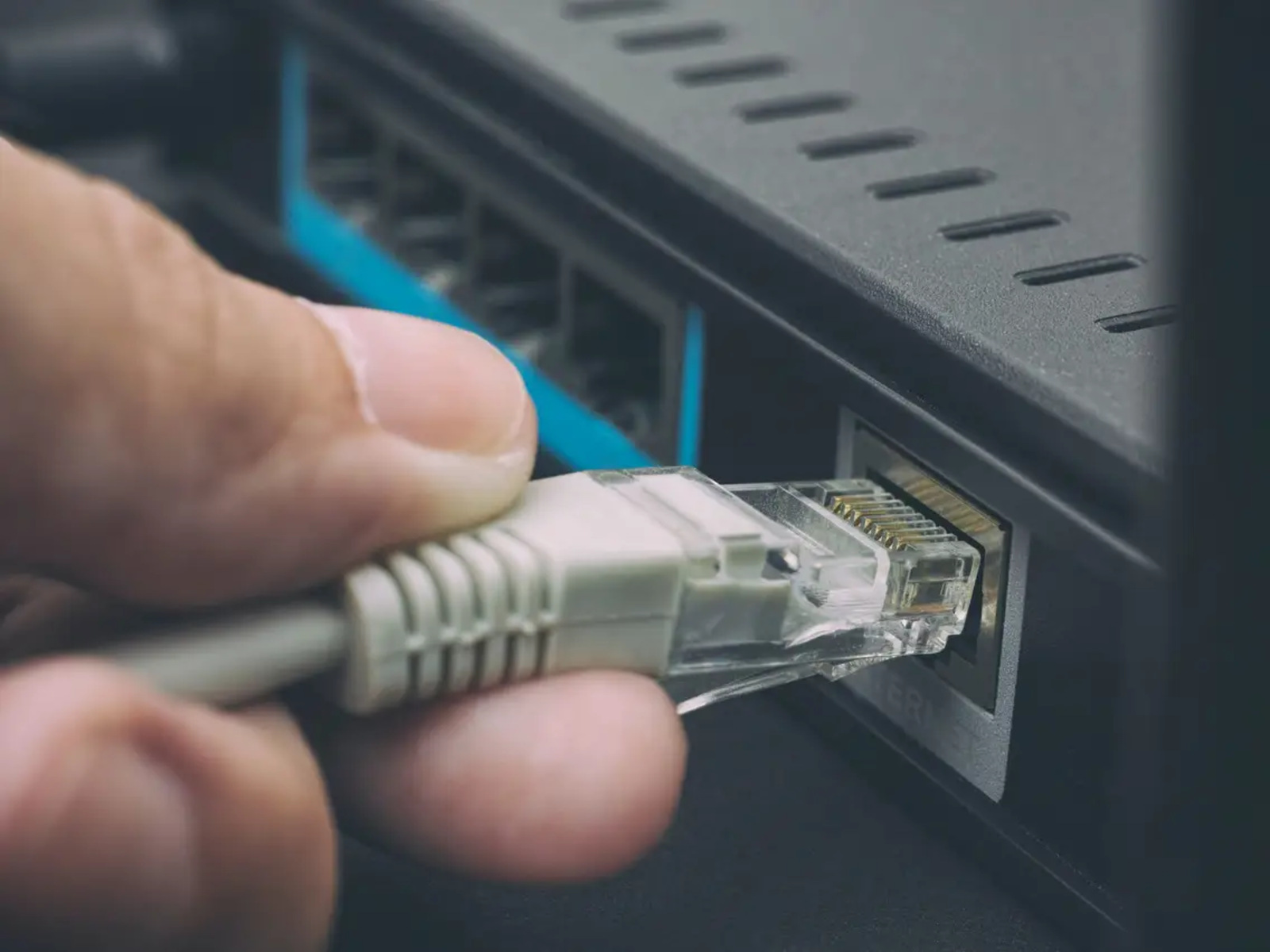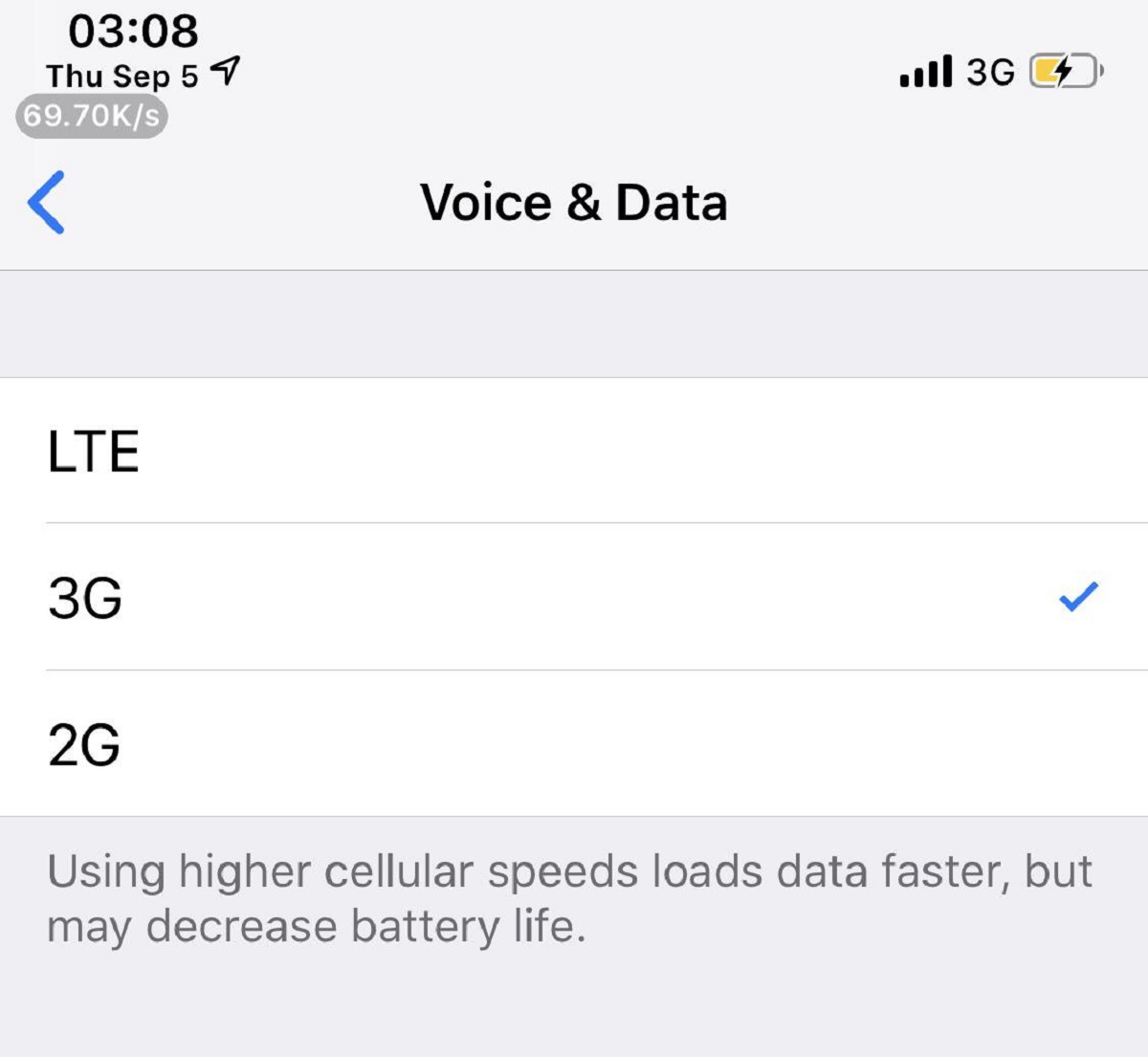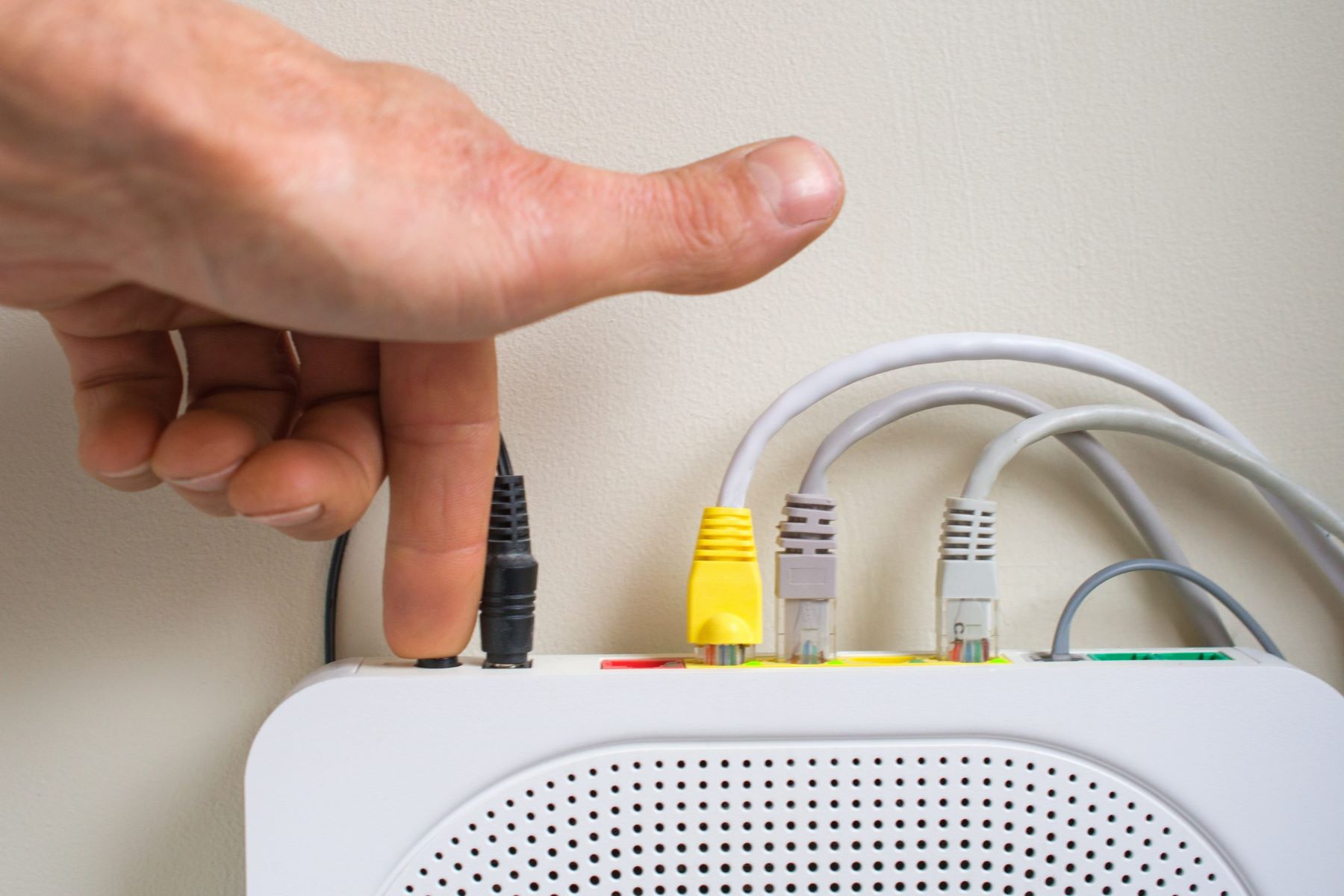Introduction
When your network connection drops frequently while using a network switch, it can be a frustrating and disruptive experience. Understanding the reasons behind this issue is crucial for troubleshooting and resolving the problem effectively. Network switches play a pivotal role in managing and directing traffic within a network, making them essential components of modern connectivity. However, various factors can contribute to network connection drops, ranging from overloaded switches to cabling issues and network congestion. By delving into the common causes of these disruptions, you can gain valuable insights into how to address and prevent them, ensuring a smoother and more reliable network experience.
Network switches serve as intelligent devices that facilitate the smooth flow of data packets within a network. They efficiently manage the transfer of information between multiple devices, such as computers, printers, and servers, by using MAC addresses to direct data to the appropriate destination. This process, known as packet switching, enhances network efficiency and reduces congestion by allowing simultaneous data transfers across different ports. Despite their essential role, network switches can encounter various issues that lead to connection drops, impacting the overall performance of the network.
By exploring the common causes of network connection drops, you can gain a deeper understanding of the potential challenges associated with network switches. This knowledge will empower you to identify and address these issues effectively, ensuring a more stable and reliable network environment. Whether the problem stems from overloaded switches, faulty hardware, incompatible devices, cabling issues, or network congestion, recognizing the underlying factors is the first step toward implementing targeted solutions. With this comprehensive understanding, you can navigate the complexities of network connectivity with confidence, minimizing disruptions and maximizing the efficiency of your network infrastructure.
Understanding Network Switches
Network switches are fundamental components of modern networking infrastructures, serving as crucial intermediaries that enable seamless communication between devices. Unlike hubs, which indiscriminately broadcast data to all connected devices, switches use MAC addresses to intelligently direct data packets only to their intended recipients. This targeted approach optimizes network efficiency and minimizes unnecessary traffic, enhancing overall performance.
Switches operate at the data link layer of the OSI model, making decisions based on MAC addresses to facilitate the transfer of data within a local area network (LAN). By creating a dynamic table that maps MAC addresses to specific switch ports, these devices can efficiently route data to the appropriate destinations, minimizing congestion and improving network responsiveness.
Modern network switches often feature advanced functionalities, such as VLAN (Virtual Local Area Network) support, Quality of Service (QoS) capabilities, and Power over Ethernet (PoE) technology. VLANs enable the segmentation of a network into multiple virtual networks, enhancing security and streamlining traffic management. QoS mechanisms prioritize specific types of data traffic, ensuring that critical applications receive the necessary bandwidth and minimizing latency. Additionally, PoE technology enables the transmission of power and data over a single Ethernet cable, simplifying the deployment of network-connected devices such as IP cameras, wireless access points, and VoIP phones.
Understanding the intricate operations and capabilities of network switches is essential for effectively managing network connectivity and addressing potential issues. By comprehending how these devices facilitate data transfer, optimize traffic flow, and support advanced features, you can make informed decisions when configuring and troubleshooting network infrastructures. Moreover, this knowledge empowers you to recognize the specific functions and potential limitations of network switches, enabling you to implement tailored solutions that maximize the reliability and performance of your network.
Common Causes of Network Connection Drops
Network connection drops can occur due to various factors, often leading to disruptions in communication and workflow. Understanding the common causes of these issues is essential for diagnosing and resolving connectivity problems effectively. When utilizing a network switch, several prevalent factors can contribute to connection drops, including overloaded switches, faulty hardware, incompatible devices, network cabling issues, and network congestion.
One of the primary causes of network connection drops is an overloaded network switch. When the volume of data traffic surpasses the switch’s processing capacity, it can lead to delays, packet loss, and ultimately, connection drops. This can occur in environments with a high number of connected devices or during periods of intense network activity, highlighting the importance of appropriately sizing and configuring switches to accommodate the network’s demands.
Faulty network switches can also be a significant source of connection drops. Hardware malfunctions, damaged components, or aging equipment can compromise the switch’s performance, resulting in intermittent connectivity issues. Regular maintenance and proactive monitoring are crucial for identifying and addressing potential hardware issues before they escalate into widespread network disruptions.
Incompatible network devices can introduce compatibility issues that manifest as connection drops within the network. Mismatched configurations, outdated firmware, or non-compliant network interfaces can disrupt the seamless flow of data, necessitating thorough compatibility checks and updates to ensure harmonious device interactions.
Network cabling issues, including damaged cables, loose connections, or incorrect wiring, can also contribute to network connection drops. The physical layer of the network infrastructure plays a pivotal role in maintaining reliable connectivity, and any issues with cabling can lead to intermittent or persistent disruptions. Regular cable inspections and adherence to best practices in cable management are essential for mitigating these issues.
Furthermore, network congestion, resulting from bandwidth limitations or inefficient traffic management, can lead to connection drops as the network struggles to accommodate the volume of data traffic. Implementing effective traffic shaping, prioritizing critical applications, and optimizing network resources can alleviate congestion-related connection drops, enhancing overall network performance.
By recognizing and addressing these common causes of network connection drops, network administrators and IT professionals can proactively mitigate potential issues, ensuring a more stable and reliable network environment for seamless communication and data transfer.
Overloaded Network Switch
An overloaded network switch can significantly impact the stability and performance of a network, leading to connection drops and diminished overall efficiency. When the volume of data traffic exceeds the switch’s processing capacity, it can result in congestion, packet loss, and increased latency, ultimately causing disruptions in connectivity. Understanding the factors contributing to switch overload and implementing effective mitigation strategies are essential for maintaining a robust and responsive network infrastructure.
Several factors can contribute to switch overload, including an excessive number of connected devices, high bandwidth utilization, and inefficient traffic management. In environments with a large number of connected devices, such as offices, educational institutions, or enterprise settings, the cumulative data traffic generated by these devices can strain the switch’s processing capabilities, leading to performance degradation and connection drops.
High bandwidth utilization, particularly during peak usage periods, can exacerbate switch overload, as the switch struggles to manage the influx of data traffic. Intensive data transfers, multimedia streaming, or concurrent access to network resources can saturate the switch’s available bandwidth, impeding the seamless flow of data and compromising network responsiveness.
Inefficient traffic management practices, such as the absence of Quality of Service (QoS) configurations or the lack of traffic prioritization, can also contribute to switch overload. Without mechanisms in place to prioritize critical data traffic and allocate bandwidth effectively, non-essential or lower-priority traffic can monopolize network resources, leading to congestion and connection drops for mission-critical applications and services.
To address switch overload and mitigate the associated connection drops, several proactive measures can be implemented. Assessing the network’s current traffic patterns and identifying potential bottlenecks can provide valuable insights into areas of congestion and bandwidth contention. Implementing QoS policies to prioritize essential data traffic, segregating network segments using VLANs to optimize traffic flow, and upgrading the switch’s capacity to accommodate increased data traffic can alleviate switch overload and enhance network stability.
Regular monitoring of network utilization, proactive capacity planning, and the implementation of scalable network infrastructure are essential for preventing switch overload and mitigating the risk of connection drops. By understanding the impact of switch overload and implementing targeted strategies to optimize network performance, organizations can maintain a resilient and responsive network environment, minimizing disruptions and ensuring seamless connectivity for all network users.
Faulty Network Switch
A faulty network switch can introduce significant disruptions and instability into a network, leading to connection drops and compromised data transfer. Hardware malfunctions, aging components, and environmental factors can contribute to the degradation of a network switch’s performance, necessitating prompt identification and resolution of potential issues. Understanding the indicators of a faulty network switch and implementing effective troubleshooting and maintenance practices are essential for preserving the reliability and functionality of the network infrastructure.
Hardware malfunctions, such as defective ports, power supply issues, or internal component failures, can impede the switch’s ability to manage data traffic effectively, resulting in intermittent or persistent connection drops. These malfunctions can manifest as erratic behavior, unresponsive ports, or indicator lights signaling abnormal conditions, signaling potential hardware issues that require immediate attention.
Aging components within the network switch, including capacitors, fans, and integrated circuits, can degrade over time, compromising the switch’s performance and reliability. Environmental factors such as temperature fluctuations, humidity, and dust accumulation can accelerate component wear and contribute to premature hardware failures, necessitating proactive maintenance and environmental controls to mitigate these risks.
Proactive monitoring and regular maintenance are crucial for identifying and addressing potential hardware issues before they escalate into widespread network disruptions. Conducting comprehensive diagnostic tests, inspecting indicator lights for abnormal behavior, and implementing firmware updates and patches can help preemptively address potential hardware issues, minimizing the risk of connection drops and network instability.
When encountering connection drops and network disruptions, administrators should conduct thorough troubleshooting to isolate potential hardware issues within the network switch. Utilizing diagnostic tools, such as network analyzers and port monitoring software, can provide valuable insights into the switch’s performance and identify potential points of failure, enabling targeted interventions to address hardware-related problems.
Replacing aging or malfunctioning components, conducting regular hardware inspections, and adhering to best practices for switch maintenance are essential for mitigating the impact of faulty network switches on network connectivity. By proactively addressing potential hardware issues and implementing robust maintenance practices, organizations can maintain a resilient and responsive network infrastructure, minimizing the risk of connection drops and ensuring uninterrupted data transfer and communication.
Incompatible Network Devices
Incompatible network devices can introduce significant challenges and disruptions to a network, leading to connection drops and impaired communication between devices. When network devices exhibit compatibility issues, such as mismatched configurations, outdated firmware, or non-compliant network interfaces, it can impede the seamless flow of data and compromise network stability. Understanding the factors contributing to device incompatibility and implementing effective resolution strategies are essential for maintaining a harmonious and functional network environment.
Mismatched configurations between network devices, such as switches, routers, and network interface cards, can lead to communication barriers and connection drops. Discrepancies in settings related to network protocols, speed and duplex settings, or VLAN configurations can hinder the establishment of reliable connections, necessitating comprehensive compatibility checks and alignment of device configurations.
Outdated firmware and software versions within network devices can also contribute to compatibility issues, as new features, bug fixes, and performance enhancements introduced in updated firmware may not be supported by legacy versions. Incompatibilities arising from firmware disparities can manifest as intermittent connection drops, reduced data transfer rates, or unresponsive device behavior, underscoring the importance of maintaining current and compatible firmware across network devices.
Non-compliant network interfaces, such as network interface cards (NICs) that do not adhere to industry standards or lack driver support for the operating system in use, can introduce compatibility challenges within the network. These non-compliant interfaces may exhibit erratic behavior, intermittent connectivity issues, or complete connection drops, necessitating the adoption of standardized and compatible network hardware to ensure seamless device interactions.
To address compatibility issues stemming from incompatible network devices, meticulous validation of device configurations, firmware updates, and adherence to industry standards are imperative. Conducting comprehensive compatibility checks when integrating new devices into the network, verifying firmware compatibility across interconnected devices, and ensuring the use of standardized and certified network interfaces are essential steps for mitigating the risk of device incompatibility and connection drops.
Regular updates and patches for firmware and device drivers, proactive validation of device compatibility, and adherence to industry standards are essential for minimizing the impact of incompatible network devices on network stability and connectivity. By fostering a network environment characterized by harmonious device interactions and seamless data transfer, organizations can mitigate the risk of connection drops and ensure uninterrupted communication and collaboration across the network.
Network Cabling Issues
The integrity of network cabling plays a pivotal role in maintaining reliable connectivity within a network. However, network cabling issues, such as damaged cables, loose connections, or incorrect wiring, can lead to connection drops and compromised data transfer. Understanding the impact of cabling issues and implementing effective strategies for identifying and resolving these challenges are essential for preserving the stability and performance of the network infrastructure.
Damaged network cables, whether resulting from physical wear, environmental factors, or accidental damage, can introduce disruptions and connection drops within the network. Frayed insulation, exposed wires, or cable breaks can impede the transmission of data, leading to intermittent connectivity issues and compromised network performance. Regular inspections and proactive replacement of damaged cables are essential for mitigating the impact of cable damage on network stability.
Loose connections within network cabling, including improperly seated connectors, unsecured cable terminations, or dislodged patch cords, can introduce intermittent connectivity issues and signal degradation. These loose connections can lead to signal loss, data errors, and connection drops, necessitating thorough cable management practices and periodic validation of connector integrity to maintain reliable connectivity.
Incorrect wiring, such as misaligned pin configurations, non-standard cable terminations, or improper cable routing, can compromise the integrity of network connections and lead to connection drops. These wiring issues can introduce signal interference, data corruption, and degraded network performance, highlighting the importance of adhering to standardized cabling practices and conducting meticulous cable validations.
To address network cabling issues and mitigate the risk of connection drops, organizations should prioritize comprehensive cable management practices, regular inspections, and adherence to industry standards for cabling installations. Implementing cable testing and validation procedures, utilizing cable management tools and accessories, and promoting a culture of meticulous cable handling are essential for preserving the reliability and functionality of network cabling.
Adhering to best practices for cable routing, termination, and labeling, conducting periodic cable inspections, and investing in high-quality cabling infrastructure are essential for minimizing the impact of network cabling issues on network stability and connectivity. By fostering a network environment characterized by robust and well-maintained cabling, organizations can mitigate the risk of connection drops and ensure uninterrupted data transfer and communication across the network.
Network Congestion
Network congestion can significantly impact the performance and reliability of a network, leading to connection drops and diminished data transfer rates. When the volume of data traffic exceeds the available network bandwidth, congestion can occur, resulting in delays, packet loss, and impaired connectivity. Understanding the causes and implications of network congestion, and implementing effective strategies to alleviate these challenges, is essential for maintaining a responsive and efficient network infrastructure.
Bandwidth limitations within the network infrastructure can contribute to network congestion, particularly during periods of high data traffic. When the available bandwidth is insufficient to accommodate the volume of data being transmitted, congestion can manifest as increased latency, reduced data transfer rates, and connection drops, impacting the overall responsiveness of the network.
Inefficient traffic management practices, such as the absence of Quality of Service (QoS) configurations or the lack of traffic prioritization, can exacerbate network congestion. Without mechanisms in place to prioritize critical data traffic and allocate bandwidth effectively, non-essential or lower-priority traffic can monopolize network resources, leading to congestion-related connection drops for mission-critical applications and services.
Network congestion can also be exacerbated by the presence of broadcast storms, multicast transmissions, or excessive data collisions within the network. These phenomena can lead to a surge in network traffic, overwhelming the network infrastructure and contributing to congestion-related performance degradation and connection drops.
To address network congestion and mitigate the risk of connection drops, organizations can implement several proactive strategies. Configuring Quality of Service (QoS) policies to prioritize critical data traffic, implementing traffic shaping mechanisms to regulate bandwidth utilization, and optimizing network resources to accommodate peak traffic periods are essential for alleviating network congestion and enhancing overall network performance.
Regular monitoring of network utilization, proactive capacity planning, and the implementation of scalable network infrastructure are essential for preventing network congestion and mitigating the risk of connection drops. By understanding the impact of network congestion and implementing targeted strategies to optimize network performance, organizations can maintain a resilient and responsive network environment, minimizing disruptions and ensuring seamless connectivity for all network users.
Conclusion
Network connection drops with a network switch can stem from various factors, including overloaded switches, faulty hardware, incompatible devices, network cabling issues, and network congestion. Understanding these common causes is essential for effectively addressing and preventing connectivity disruptions. Overloaded switches, resulting from high data traffic and inefficient traffic management, can lead to congestion and connection drops, necessitating proactive capacity planning and traffic optimization. Faulty network switches, characterized by hardware malfunctions and aging components, can compromise network stability, highlighting the importance of regular maintenance and diagnostics. Incompatible network devices, such as mismatched configurations and outdated firmware, can introduce communication barriers and connection drops, emphasizing the need for meticulous compatibility checks and updates. Network cabling issues, including damaged cables and loose connections, can impede data transfer and lead to connection drops, underscoring the significance of comprehensive cable management practices and regular inspections. Network congestion, arising from bandwidth limitations and inefficient traffic prioritization, can lead to performance degradation and connection drops, necessitating the implementation of QoS policies and proactive network monitoring.
By recognizing the impact of these factors on network connectivity and implementing targeted strategies to mitigate their effects, organizations can maintain a resilient and reliable network environment. Proactive maintenance, comprehensive diagnostics, adherence to industry standards, and the implementation of traffic optimization measures are essential for minimizing the risk of connection drops and preserving seamless communication and data transfer within the network. Embracing a holistic approach to network management, encompassing hardware maintenance, software updates, and effective traffic management, is crucial for ensuring a responsive and efficient network infrastructure.
With a thorough understanding of the common causes of network connection drops and the proactive measures to address them, network administrators and IT professionals can navigate the complexities of network connectivity with confidence. By fostering a network environment characterized by stability, responsiveness, and seamless connectivity, organizations can optimize their operational efficiency and facilitate uninterrupted communication and collaboration across the network.

























